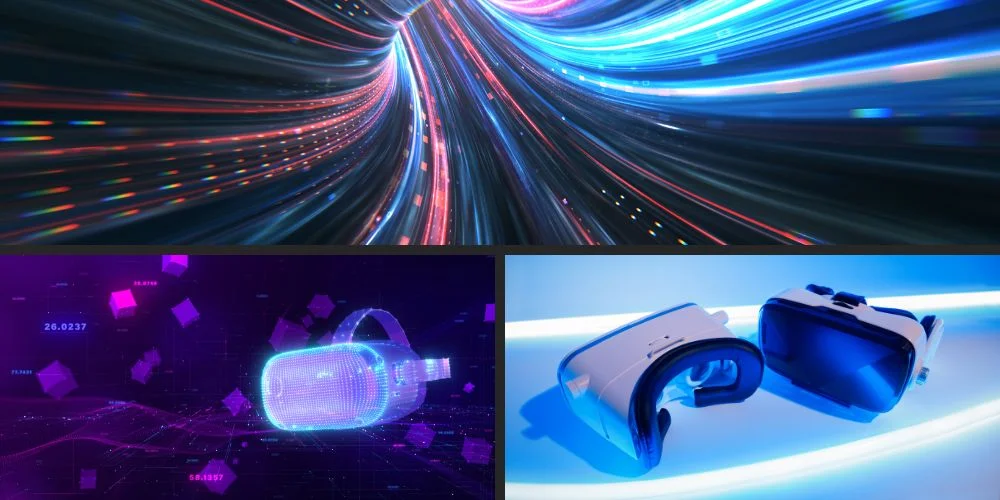Virtual Reality (VR) is revolutionizing how we interact with digital content, providing immersive experiences that transport users to new environments. This comprehensive analysis delves into VR’s significance, underlying technologies, diverse applications, challenges faced, and future landscape.
Significance of Virtual Reality
The significance of VR is profound due to several key factors:
- Immersive Experiences: VR offers fully immersive experiences that can simulate real-world or fantastical environments, enhancing user engagement and interaction.
- Training and Education: VR is a powerful tool for training and education, allowing for realistic simulations without the risks or costs associated with physical setups.
- Entertainment and Creativity: VR expands the boundaries of entertainment and creative expression, providing new platforms for storytelling, gaming, and artistic endeavors.
Underlying Technologies of Virtual Reality
Understanding the underlying technologies of VR is essential:
- Head-Mounted Displays (HMDs): VR headsets, such as the Oculus Rift, HTC Vive, and PlayStation VR, provide high-resolution displays and motion tracking to create immersive visual experiences.
- Motion Tracking: Advanced motion tracking systems use sensors to capture the user’s movements, translating them into the virtual environment for a more interactive experience.
- Haptic Feedback: Haptic technology adds tactile feedback to VR, allowing users to feel sensations and interact with virtual objects more realistically.
Applications of Virtual Reality
VR finds diverse applications across various sectors:
- Gaming: VR has transformed the gaming industry, offering players immersive environments and interactive gameplay that traditional gaming platforms cannot match.
- Healthcare: VR is used for surgical simulations, treatments, pain management, and mental health therapies, providing innovative healthcare solutions.
- Real Estate: VR enables virtual property tours, allowing potential buyers to explore homes and commercial spaces remotely and interactively.
- Education: VR enhances learning experiences by providing virtual field trips, interactive lessons, and realistic training simulations for students and professionals.
Challenges in Virtual Reality
Despite its advantages, VR faces several challenges:
- Technical Limitations: VR systems require significant computational power and high-resolution displays, which can be costly and limit accessibility.
- Motion Sickness: Some users experience motion sickness or discomfort when using VR, which can be a barrier to widespread adoption.
- Content Development: Creating high-quality VR content is complex and resource-intensive, requiring specialized skills and tools.
Evolving Virtual Reality Technologies
VR technologies are continuously evolving:
- Wireless VR: Advances in wireless technology are reducing the need for cables, providing greater freedom of movement and a more immersive experience.
- Augmented Reality (AR) Integration: Combining VR with AR creates mixed-reality experiences that combine digital content with the physical world.
- Social VR: Platforms like VRChat and AltspaceVR enable social interactions in virtual spaces, fostering new forms of communication and community building.
Future Trends in Virtual Reality
Ongoing trends shape the future of VR:
- Enhanced Realism: Improvements in graphics, haptic feedback, and motion tracking will make VR experiences increasingly realistic and immersive.
- Broader Accessibility: As VR technology becomes more affordable and user-friendly, its adoption will expand across various demographics and sectors.
- VR in Business: VR will grow in business applications, from virtual meetings and collaborative workspaces to training and product development.
Conclusion
Virtual Reality stands at the forefront of digital innovation, offering unprecedented opportunities for immersive experiences, education, healthcare, and beyond. As VR technology advances and overcomes existing challenges, its potential to transform industries and enrich our lives becomes increasingly apparent. Through ongoing research, collaboration, and creative exploration, VR will continue to push the boundaries of what is possible in the digital realm, shaping the future of human interaction and experience.










